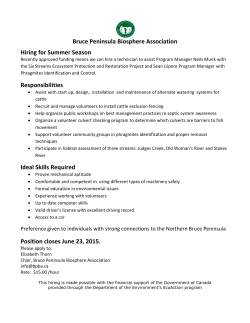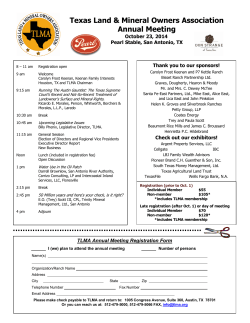
An investigation into the interaction between common fatal
An investigation into the interaction between common fatal diseases and independent risk factors for the mortality of beef cattle in Zimbabwe. An account of my time at Nuanetsi. By Alice Bednall-Brough (5th year, R(D)SVS) The Nuanetsi Ranch is one of the largest beef producers in Zimbabwe, with over 4000 Brahman, Beefmaster, Charolais and Hereford pure and cross-bred cattle, on an extremely extensive area of land. Losses from mortality of cattle are contributing significantly to a decrease in productivity on the ranch and slowing the progress of expansion of the herd to better make use of such a large plot. By evaluating the nature and patterns of mortalities on the ranch, this project aims to identify areas that require focus to reduce the risk of mortality. My objective was to gain an understanding of the causes of death in cattle on the Nuanetsi Ranch, and from there to select the most prevalent causes and go some way to determining risk factors for dying of these causes. The scope of this is vast so I decided to choose the two most A Brahman heifer in a kraal prevalent diseases causing mortality, and to look at those in relation to the two risk factors of age and sex, and, to an extent, the time of year. Initial evalutations led me to an interest in Snotsiekte (malignant catarrhal fever) and Heartwater (Ehrlichia rumminantium) as potentially fatal diseases to study. By determining relative risks using Epi Info 7 software, I was able to arrive at a number of conclusions regarding the mortalities, and these are discussed in my report. On the 8 hour drive down to Nuanetsi Ranch from Harare, I was able to see Zimbabwe’s countryside – a lot of which was farmed until the recent political unrest – and witness firsthand the reality of life in the third world. My project supervisor, Dr Bruce, a large animal vet, and I were kindly accommodated by Roy, the farm manager, for our time at Nuanetsi – he and his family were very generous hosts. I spent the first day in the office working my way through all the farm’s records from the past year and collecting the relevant data. The next few days involved discussing my ideas with Dr Bruce and the best way to go about my investigations, and formatting my data. Roy, the farm manager, took me on a drive around the ranch, and it was only at that point that I appreciated how vast the place really was. The type of land the ranch is on is termed ‘lowvelt’ - tall grasses, dense trees and incredible heat. It was fascinating to witness farming and management of animals on such a scale. The Amblyomma tick which transmits Heartwater disease Some of the groups of cattle had been rounded up into smaller pens (known as kraals) to be assessed by Dr Bruce, and this gave me an opportunity to observe any animals which may be showing clinical signs of the diseases I was interested in for my project. By my final day I had a much clearer appreciation of how the farm was managed and the problems this system of animal breeding faces, and having gathered all the data possible, was fortunate to then have the day free to accompany Dr Bruce as he bull tested. I had the opportunity to perform rectal examinations on a number of bulls and Dr Bruce taught me the various stages involved in assessing bull fertility. Two Brahman bulls in the race for bull testing Dr Bruce’s bull testing field laboratory My personal experience on this trip was something I will never forget, and for that I am incredibly grateful to the BVA Overseas Travel Group and to the R(D)SVS for their generosity. I look forward to taking the lessons learned here forward into my career.
© Copyright 2025





















